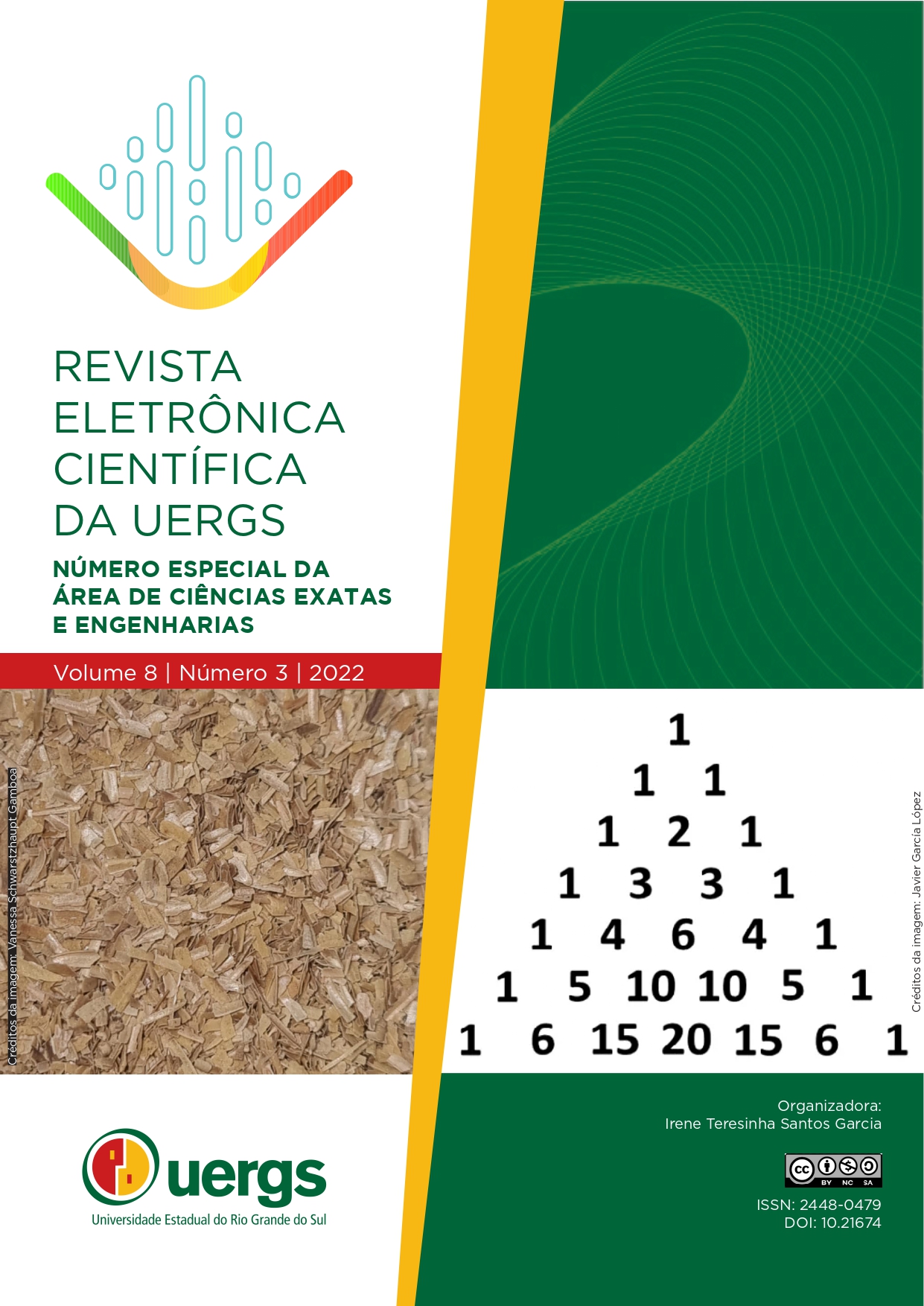Identificação de potenciais inibidores da enzima NS2B-NS3 do Zika Vírus
DOI:
https://doi.org/10.21674/2448-0479.83.258-266Palavras-chave:
NS2B-NS3, ZIKV, aedes aegypti.Resumo
O vírus Zika (ZIKV) são flavivírus pertencentes à família flaviviridae, que são transmitidos pela picada do vetor infectado; nesse caso, mosquito do gênero Aedes aegypti. A replicação viral é função da proteína não estrutural NS3-pro que atua em associação com NS2B, aumentando a eficiência enzimática. Assim, esse domínio da protease N2B-NS3 apresenta um alvo atrativo para o planejamento de novos fármacos antivirais. Diante disto, este artigo buscou abordar a importância farmacológica dos heterocíclicos benzotiazóis e trouxe exemplos de derivados benzotiazóis como novos candidatos a fármacos capazes de inibirem a protease N2B-NS3 do ZIKV.
Downloads
Referências
ADAMS, R.A. et al.; Rifamycin antibiotics and the mechanisms of their failure. The Journal Of Antibiotics, v.74, p.786–798, 2021. Disponível em: https://doi.org/10.1038/s41429-021-00462-x . Acesso em: 19 jul. 2022.
ALERT-ONLINE. Medicamento para o glaucoma pode tratar tuberculose? Disponível em: https://www.alert-online.com/br/news/health-portal/medicamento-para-o-glaucoma-pode-tratar-tuberculose. Acesso em: 19 jul. 2022.
ALZFORUM, 2022. Riluzole. Disponível em: https://www.alzforum.org/therapeutics/riluzole. Acesso em: 19 jul. 2022.
AUBRY, M. et al.; Zika Virus Seroprevalence, French Polynesia, 2014-2015. Emerging infectious diseases. v.23, n. 4, p. 669-672, 2017. Disponível em: https://doi.org/10.3201/eid2304.161549. Acesso em: 18 jul. 2022.
AYRES, C.F.C. J. Identification of Zika virus vectors and implications for control. The Lancet Infectious Diseases, v.16, n.3, p. 278-279, 2016. Disponível em: https://doi.org/doi:10.1016/s1473-3099(16)00073-6. Acesso em: 19 jul. 2022.
BABA, H.; YAOITA, Y.; KIKUCHI, M.; Sesquiterpenoids and Lactone Derivatives from Ligularia dentata. Helvetica Chimica Acta, v. 90, n.5, p. 1028-1037, 2007. Disponível em:https://doi.org/10.1002/hlca.200790086. Acesso em: 19 jul. 2022.
DICK, G. W; KITCHEN, S.F; HADDOW, A.J. Zika virus. I. Isolations and serological specificity. Transactions of the Royal Society of Tropical Medicine and Hygiene. v.46, n.5, p.509-520, 1952. Disponível em: https://doi.org/10.1016/0035-9203(52)90042-4. Acesso em: 18 jul. 2022.
DUFFY, M.R et al.; Zika virus outbreak on Yap Island, Federated States of Micronesia. The New England Journal Of Medicine. v.360, n. 24, p. 2536-2543, 2009. Disponível em: https://doi.org/10.1056/NEJMoa0805715. Acesso em: 18 jul. 2022.
GARCIA-BÁEZ, E.V. et al.; Benzothiazoles from Condensation of o-Aminothiophenoles with Carboxylic Acids and Their Derivatives: A Review. Molecules, v. 26, n.21, p. 6518. Disponível em: https://doi.org/10.3390/molecules26216518. Acesso em: 19 jul. 2022.
HOSOKAWA, N. et al.; New Triene-ansamycins, Thiazinotrienomycins F and G and a Diene-ansamycin, Benzoxazomycin, The Journal of Antibiotics, 2000, v.53, n. 9, P. 886-894, 2008. Disponível em: https://doi.org/10.7164/antibiotics.53.886. Acesso em: 19 jul. 2022.
HU, Y.; MACMILLAN, J. B.; Erythrazoles A–B, Cytotoxic Benzothiazoles from a Marine-Derived Erythrobacter sp. Organic Letters, v.13, n.24, p. 6580-6583, 2011. Disponível em: https://doi.org/10.1021/ol202944g. Acesso em: 19 jul. 2022.
MAUS, H. et al.; SAR of novel benzothiazoles targeting an allosteric pocket of DENV and ZIKV NS2B/NS3 proteases, Bioorganic & Medicinal Chemistry, v. 47, p.116392, 2021. Disponível em: https://doi.org/10.1016/j.bmc.2021.116392. Acesso em: 21 jul. 2022.
MORTIMER, C. G. et al.; Antitumor Benzothiazoles. 26.12-(3,4-Dimethoxyphenyl)-5-fluorobenzothiazole (GW 610, NSC 721648), a Simple Fluorinated 2-Arylbenzothiazole, Shows Potent and Selective Inhibitory Activity against Lung, Colon, and Breast Cancer Cell Lines. Journal of Medicinal Chemistry, v. 49, n.1, p.179−185, 2006. Disponível em: https://doi.org/10.1021/jm050942k. Acesso em: 19 jul. 2022.
MUKHOPADHYAY, S; KUHN, R.J; ROSSMANN, M.G. A structural perspective of the flavivirus life cycle. Nature Review Microbiology, v. 3, n.1, p. 13-22, 2005. Disponível em: https://doi.org/10.1038/nrmicro1067. Acesso em: 19 jul. 2022.
MYLARI, B.L et al.; Novel, potent aldose reductase inhibitors: 3,4-dihydro-4-oxo-3-[[5-(trifluoromethyl)-2-benzothiazolyl] methyl]-1-phthalazineacetic acid (zopolrestat) and congeners. Journal of Medicinal Chemistry, v.34, n.1, p.108-122. Disponível em: https://doi.org/10.1021/jm00105a018. Acesso em: 19 jul. 2022.
OLIVEIRA, A. G. et al.; Bioluminescência de fungos: distribuição, função e mecanismo de emissão de luz. Química Nova, v. 36, n. 2, p. 314-319, 2013. Disponível em: https://doi.org/10.1590/S0100-40422013000200018. Acesso em: 22 jun. 2022.
PARDY, R.D; RICHER, M.J; Zika Virus Pathogenesis: From Early Case Reports to Epidemics. Viruses, v.11, n.10 p.886, 2019. Disponível em: https://doi.org/10.3390/v11100886. Acesso em: 19 jul. 2022.
SAMPAIO, G. S. et al.; Expansão da circulação do vírus Zika da África à América, 1947- 2018: revisão da literatura. Epidemiologia e Serviços de Saúde, v.28, n.2, 2019. Disponível em: http://dx.doi.org/10.5123/s1679-49742019000200022. Acesso em: 19 jul. 2022.
SIMPSON, D. I. H. Zika virus infection in man. Transactions of the Royal Society of Tropical Medicine and Hygiene, v.58, n.4, p.335-338, 1964. Disponível em: https://doi.org/10.1016/0035-9203(64)90200-7. Acesso em: 18 jul. 2022.
TAKAKURA, H. Molecular Design of d-Luciferin-Based Bioluminescence and 1,2-Dioxetane-Based Chemiluminescence Substrates for Altered Output Wavelength and Detecting Various Molecules. Molecules, v. 26, n. 6, p.1618, 2021. Disponível em: https://doi.org/10.3390/molecules26061618. Acesso em: 19 jul. 2022.
TAN, T.Y. et al.; Capsid protein structure in Zika virus reveals the flavivirus assembly process. Nature Communications, v.11, n.895, 2020. Disponível em: https://doi.org/10.1038/s41467-020-14647-9 . Acesso em: 19 jul. 2022.
THOMAS, K.D. et al.; New quinolin-4-yl-1,2,3-triazoles carrying amides, sulphonamides and amidopiperazines as potential antitubercular agents. European Journal of Medicinal Chemistry, v.46, n. 6, p. 2503–2512, 2011. Disponível em: https://doi.org/10.1016/j.ejmech.2011.03.039. Acesso em: 19 jul. 2022.
VOSS, S.; NITSCHE, C. Inhibitors of the Zika virus protease NS2B-NS3. Bioorganic & Medicinal Chemistry Letters, v.30, n.5, 2020. Disponível em: https://doi:10.1016/j.bmcl.2020.126965. Acesso em: 19 jul. 2022.
WORLD HEALTH ORGANIZATION, 2022. Ten threats to global health. Disponível em:https://www.who.int/news-room/spotlight/ten-threats-to-global-health-in-2019. Acesso em: 20 jan. 2022.
Downloads
Publicado
Como Citar
Edição
Seção
Licença
A reprodução total dos artigos da Revista em outros meios de comunicação eletrônicos de uso livre é permitida de acordo com a licença Creative Commons Atribuição-NãoComercial-CompartilhaIgual 4.0 Internacional.

